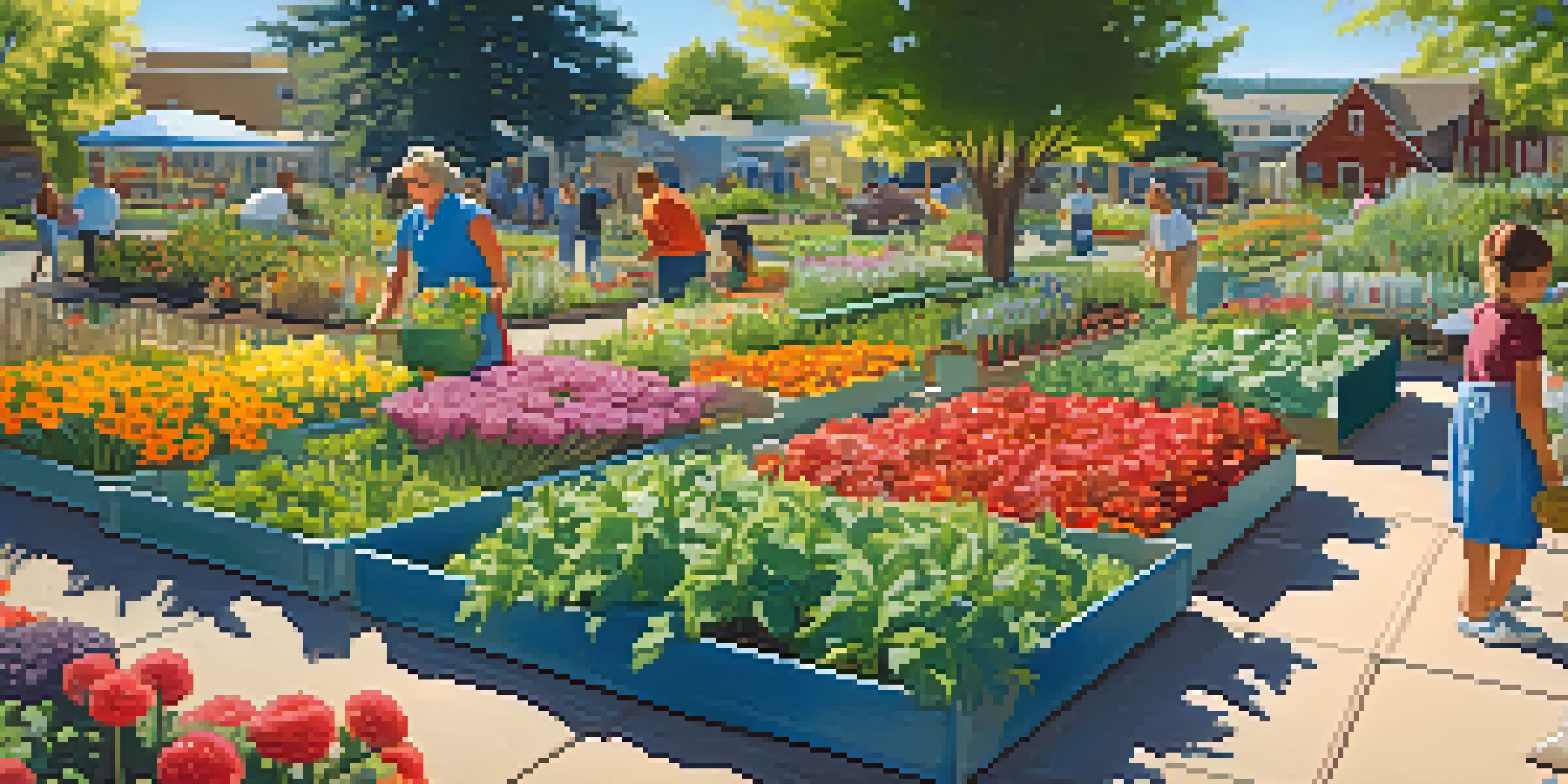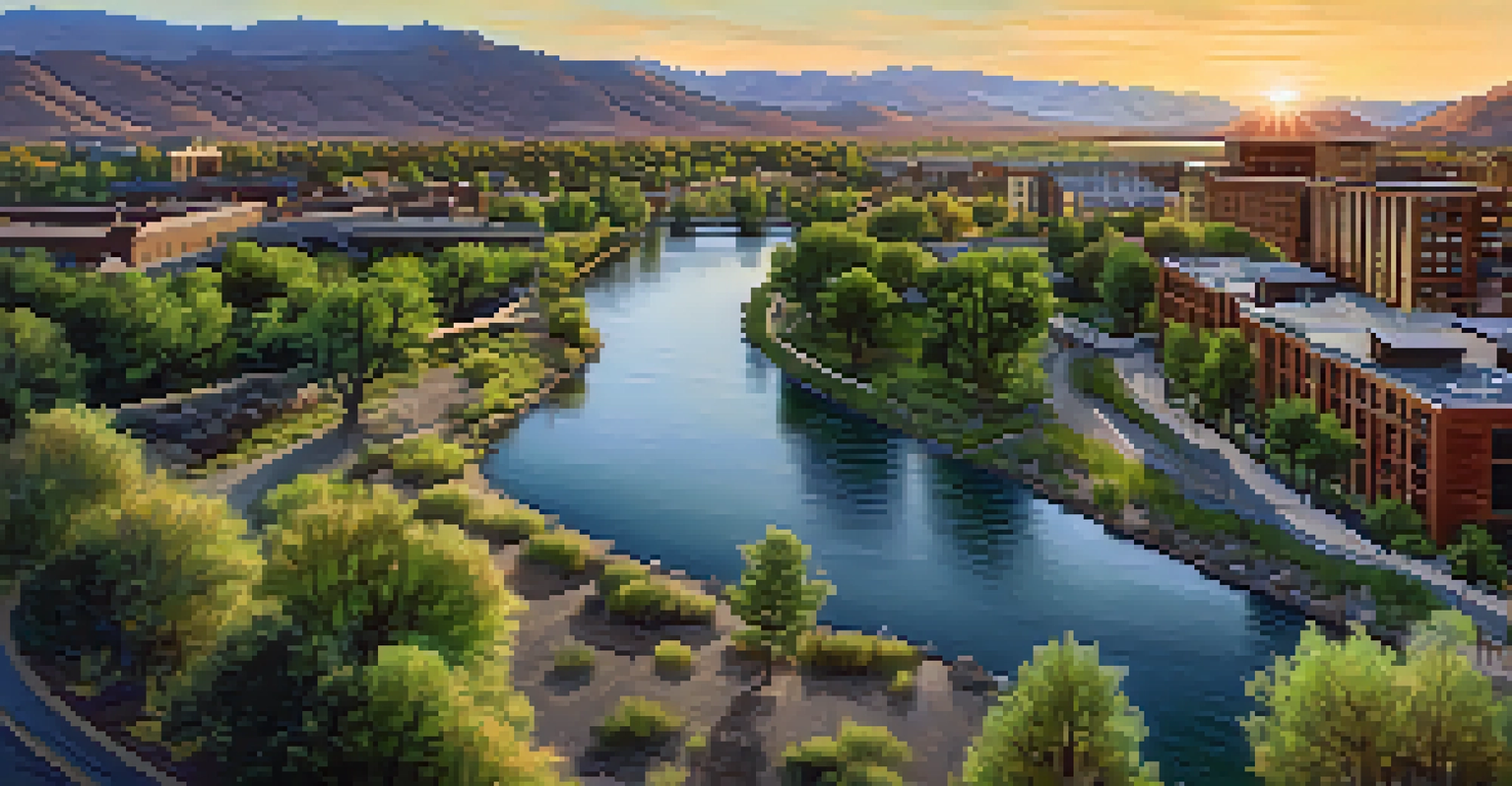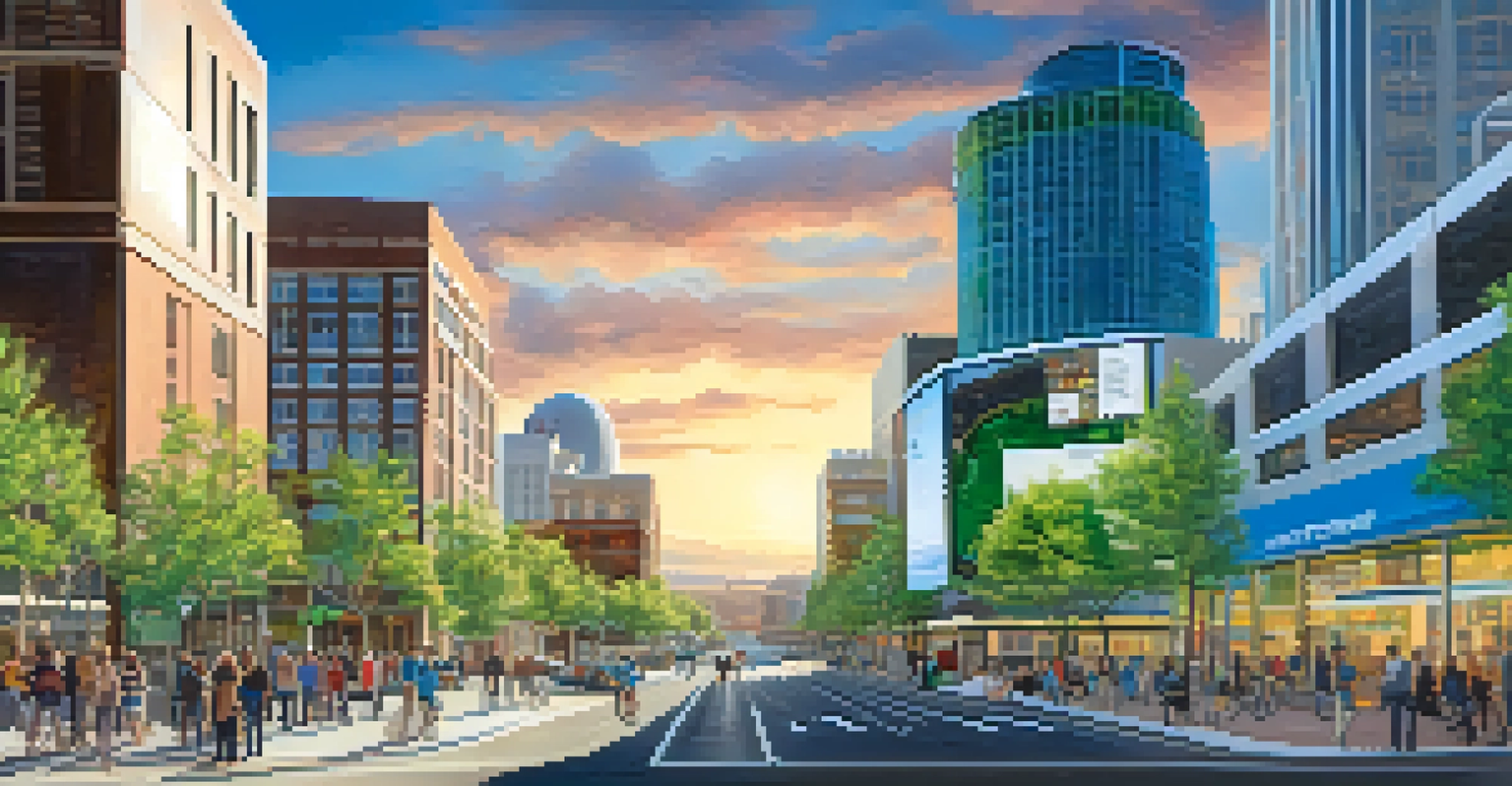Reno's Climate Adaptations: Innovations in Urban Planning

Understanding Reno's Unique Climate Challenges
Reno faces a unique set of climate challenges, including rising temperatures and unpredictable weather patterns. These issues not only affect the city's natural environment but also its infrastructure and residents' quality of life. As the climate continues to change, it's crucial for urban planners to address these challenges head-on, ensuring the city can adapt effectively. This sets the stage for innovative solutions that can help mitigate these impacts.
The greatest threat to our planet is the belief that someone else will save it.
For instance, the increasing frequency of droughts in the region necessitates a strategic approach to water management. Urban planners are exploring ways to enhance water conservation efforts while keeping the community's needs in mind. This involves integrating green infrastructure that not only conserves water but also beautifies the urban landscape.
By understanding these challenges, Reno can prioritize initiatives that foster resilience. This proactive approach encourages collaboration among city officials, residents, and environmental organizations, ultimately leading to a more sustainable future.
Innovative Water Management Strategies in Reno
Water management is at the forefront of Reno's climate adaptation efforts. With a history of drought, the city is implementing innovative strategies such as rainwater harvesting and greywater recycling. These methods not only conserve precious water resources but also promote sustainable practices within the community.

For example, local businesses and residents are encouraged to install rain barrels to collect runoff from rooftops. This collected water can then be used for landscaping and gardening, reducing the demand on municipal water supplies. Such initiatives not only alleviate pressure on the water system but also engage the community in sustainability efforts.
Addressing Water Management Challenges
Reno is implementing innovative water management strategies, such as rainwater harvesting and greywater recycling, to combat increasing drought conditions.
Moreover, the city is investing in permeable pavement and green roofs, which help absorb rainwater and reduce urban runoff. These solutions not only manage water effectively but also contribute to reducing the urban heat island effect, making Reno a cooler and more pleasant place to live.
Enhancing Urban Green Spaces for Climate Resilience
Urban green spaces play a vital role in climate adaptation, and Reno is making strides in enhancing these areas. Parks, community gardens, and green corridors not only provide recreational opportunities but also improve air quality and biodiversity. These spaces act as natural buffers against extreme weather events, helping to regulate temperatures and manage stormwater.
We won't have a society if we destroy the environment.
One noteworthy initiative is the revitalization of the Truckee River corridor, which aims to create a vibrant ecosystem while providing residents with access to nature. By restoring native vegetation and creating walking paths, the city encourages outdoor activities and community engagement. This not only beautifies the area but also fosters a connection between residents and their environment.
Furthermore, engaging the community in planting trees and maintaining these green spaces cultivates a sense of ownership and responsibility. As residents invest in their local environment, they become more aware of the importance of sustainability and climate resilience.
Smart Technology Integrations for Urban Planning
Reno is embracing smart technology to enhance urban planning and climate adaptation. By utilizing data-driven approaches, city planners can make informed decisions that address current needs and anticipate future challenges. Technologies like Geographic Information Systems (GIS) help visualize climate data, allowing for better planning and resource allocation.
Additionally, smart sensors can monitor environmental conditions in real-time, providing insights into air quality and heat levels. This information can guide city officials in implementing strategies that directly respond to changing conditions. For example, if temperatures rise significantly, the city can activate cooling centers for vulnerable populations.
Enhancing Urban Green Spaces
The city is revitalizing urban green spaces like the Truckee River corridor to improve biodiversity, air quality, and community engagement.
The integration of technology not only improves efficiency but also enhances public engagement. By making data accessible to residents, the community can actively participate in discussions about urban planning and climate initiatives, fostering a collaborative environment.
Community Engagement in Climate Adaptation Efforts
Community engagement is a cornerstone of Reno's climate adaptation strategy. By involving residents in the planning process, the city ensures that initiatives reflect the needs and values of its citizens. This collaborative approach builds trust and encourages active participation in sustainability efforts.
Reno hosts workshops and public forums to gather input from community members about their concerns and ideas. This feedback is invaluable in shaping policies that promote resilience and sustainability. For example, residents might suggest improvements to public transportation to reduce emissions or advocate for more green spaces in their neighborhoods.
Moreover, local organizations are partnering with the city to promote educational programs about climate change and sustainable practices. By fostering a sense of community responsibility, residents are more likely to adopt eco-friendly habits that contribute to the overall health of the city.
Mitigating Urban Heat Island Effects in Reno
The urban heat island effect is a significant concern for cities like Reno, where built environments absorb and retain heat. To combat this, the city is implementing measures to cool urban areas through innovative design and landscaping. This involves planting more trees, creating shaded spaces, and using reflective materials in construction.
For instance, Reno's initiative to increase tree canopies in residential and commercial areas helps provide shade and lower surface temperatures. Not only does this improve comfort for residents, but it also reduces the demand for air conditioning, leading to lower energy costs and decreased greenhouse gas emissions.
Community Involvement in Planning
Reno's climate adaptation strategy emphasizes community engagement through workshops and educational programs to ensure initiatives meet residents' needs.
In addition, the city is exploring the use of cool roofs and pavements that reflect, rather than absorb, sunlight. These materials can significantly lower surface temperatures, making urban spaces more bearable during hot summer months. Collectively, these efforts contribute to a healthier and more sustainable urban environment.
Future Directions for Reno's Urban Planning Innovations
As Reno continues to embrace climate adaptation, the city is setting its sights on future innovations in urban planning. This includes exploring renewable energy sources, such as solar and wind, to power public infrastructure sustainably. By investing in clean energy, Reno can reduce its carbon footprint and promote a greener economy.
Furthermore, the city is looking to enhance public transportation options, making it easier for residents to navigate without relying on personal vehicles. Expanding bike lanes and improving public transit can significantly reduce traffic congestion and emissions, contributing to a more sustainable urban landscape.

Ultimately, the future of Reno's urban planning lies in its ability to adapt and evolve with changing climate conditions. By prioritizing innovative solutions and community involvement, the city can pave the way for a resilient and sustainable future that benefits all residents.